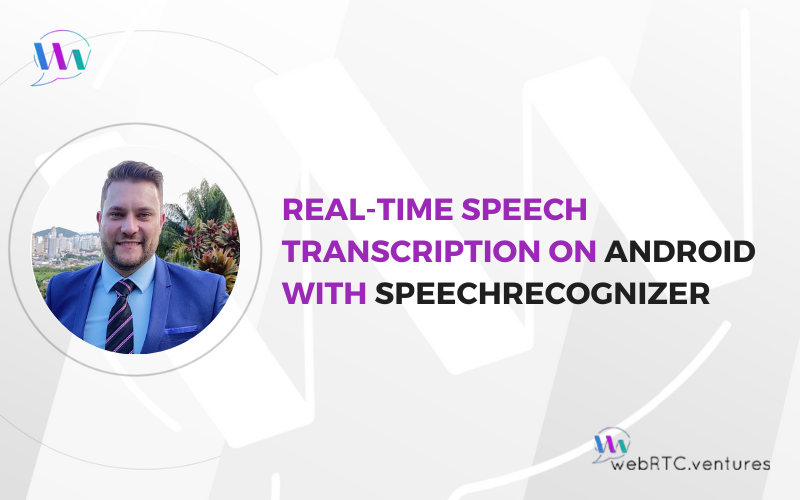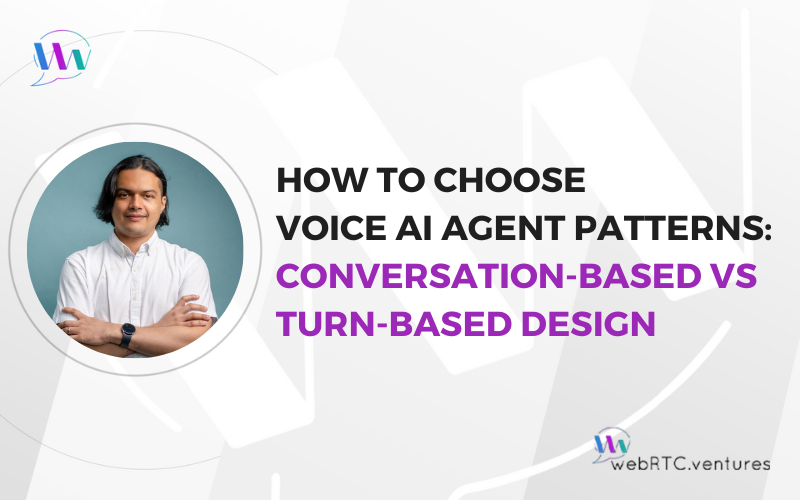Voice-to-text technology has advanced significantly, enabling real-time transcription for various applications. From enhancing workplace productivity to supporting individuals with disabilities, speech-to-text solutions have become integral across numerous sectors. Professionals in fields like journalism, legal services, education, and healthcare, to name a few, are leveraging real-time transcription to capture critical information accurately and efficiently.
In this post, we’ll explore how to build a simple Android app that transcribes conversations locally using SpeechRecognizer from android.speech. We’ll also discuss the pros and cons of on-device versus cloud-based speech-to-text solutions.
Why Use SpeechRecognizer for Real-Time Transcription?
Android’s built-in SpeechRecognizer is an excellent choice for real-time speech-to-text because:
- It runs locally on the device, ensuring privacy and low latency.
- It does not require an internet connection.
- It’s free to use with no API quotas or cloud service dependencies.
- It’s easy to integrate into an Android app.
However, it has some limitations, such as:
- Less accuracy compared to cloud-based solutions, especially for complex phrases or vocabulary.
- Limited language support depending on the device.
- Management of the transcription display to be able to see the text written in real time
Setting Up SpeechRecognizer in an Android App
To get started, let’s build a simple Android demo that listens for speech and displays the transcribed text in real time.
Step 1: Add Permissions to AndroidManifest.xml
<uses-permission android:name="android.permission.RECORD_AUDIO"/>Step 2: Initialize SpeechRecognizer in Kotlin
speechRecognizer = SpeechRecognizer.createSpeechRecognizer(this)
speechRecognizer.setRecognitionListener(object : RecognitionListener {
override fun onReadyForSpeech(params: Bundle?) {
textView.text = "Listening..."
}
override fun onResults(results: Bundle?) {
val matches = results?.getStringArrayList(SpeechRecognizer.RESULTS_RECOGNITION)
if (!matches.isNullOrEmpty()) {
textView.text = matches[0] // Display first recognized result
}
}
override fun onError(error: Int) {
textView.text = "Error: $error"
}
override fun onEndOfSpeech() {
textView.text = "Processing..."
}
override fun onBeginningOfSpeech() {}
override fun onBufferReceived(buffer: ByteArray?) {}
override fun onEvent(eventType: Int, params: Bundle?) {}
override fun onPartialResults(partialResults: Bundle?) {}
override fun onRmsChanged(rmsdB: Float) {}
})
// Initialize Intent for Speech Recognition
speechIntent = Intent(RecognizerIntent.ACTION_RECOGNIZE_SPEECH).apply {
putExtra(RecognizerIntent.EXTRA_LANGUAGE_MODEL, RecognizerIntent.LANGUAGE_MODEL_FREE_FORM)
putExtra(RecognizerIntent.EXTRA_LANGUAGE, Locale.getDefault())
}
startButton.setOnClickListener { startListening() }
stopButton.setOnClickListener { speechRecognizer.stopListening() }Step 3: Handling Continuous Listening
Since SpeechRecognizer stops listening after a pause, you’ll need to restart it manually.
override fun onResults(results: Bundle?) {
val matches = results?.getStringArrayList(SpeechRecognizer.RESULTS_RECOGNITION)
if (!matches.isNullOrEmpty()) {
textView.text = matches[0]
}
startListening() // Restart listening after a result
}
override fun onError(error: Int) {
textView.text = "Error: $error"
startListening() // Restart listening after an error
}On-Device vs. Cloud Speech Recognition
Accuracy
On-device solutions like SpeechRecognizer work well for simple speech recognition but can struggle with accents, technical jargon, or complex sentences. Cloud-based services, such as Amazon Transcribe, Google Cloud Speech-to-Text or OpenAI Whisper, utilize more advanced models trained on larger datasets, offering better accuracy.
Privacy & Security
On-device speech recognition ensures that all processing happens locally, making it a great option for privacy-focused applications. Cloud-based solutions, however, require sending audio data to remote servers, which could raise concerns about data security, especially for sensitive conversations.
Performance & Latency
Local processing with SpeechRecognizer is nearly instant, as there is no need to send data over a network. Cloud services, on the other hand, introduce some latency (usually 100s of milliseconds) due to the round-trip communication, though they generally provide faster and more accurate results for long-form speech.
Language Support
SpeechRecognizer supports multiple languages, but the availability varies by device and OS version. Cloud-based STT solutions offer extensive language support and the ability to recognize multiple speakers, making them more versatile for multilingual applications.
Cost
On-device speech recognition is entirely free, whereas cloud-based solutions often operate on a pay-per-use model. Google Cloud Speech-to-Text, for example, charges per minute of audio processed, which can add up for high-volume applications.
Demo: Client Side Transcription Using SpeechRecognizer
Ready to Explore Your Speech Recognition Options?
Ultimately, the right solution depends on your specific use case, performance requirements, and user privacy considerations. If you need real-time transcription with minimal setup and privacy, SpeechRecognizer is a solid choice. For applications requiring higher accuracy, speaker differentiation, or multilingual support, cloud-based solutions might be better.
Our team at WebRTC.ventures can help you navigate these technical decisions and implement the most appropriate speech transcription strategy for your project. Contact WebRTC.ventures and let’s implement the perfect speech transcription solution for your application.











